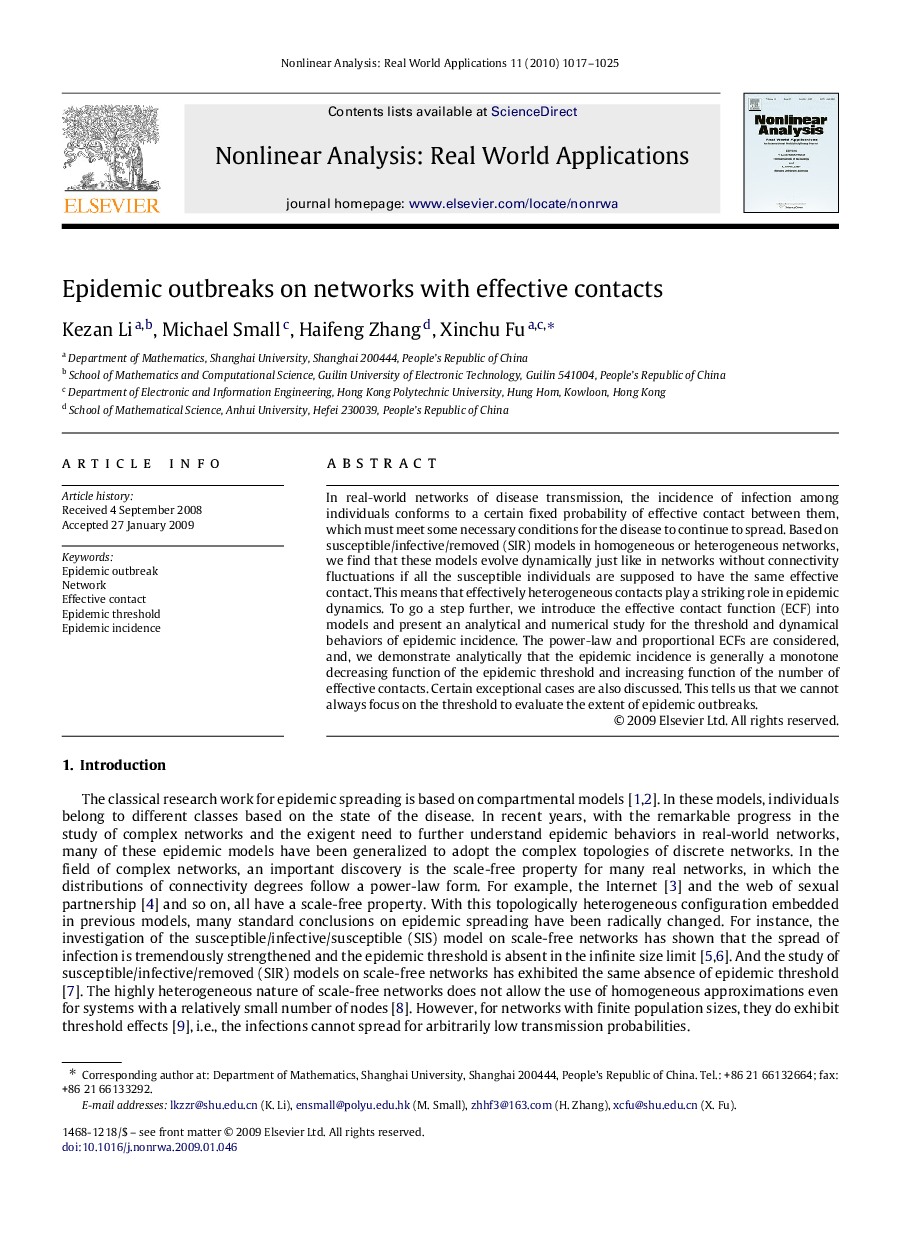| کد مقاله | کد نشریه | سال انتشار | مقاله انگلیسی | نسخه تمام متن |
|---|---|---|---|---|
| 838222 | 908356 | 2010 | 9 صفحه PDF | دانلود رایگان |

In real-world networks of disease transmission, the incidence of infection among individuals conforms to a certain fixed probability of effective contact between them, which must meet some necessary conditions for the disease to continue to spread. Based on susceptible/infective/removed (SIR) models in homogeneous or heterogeneous networks, we find that these models evolve dynamically just like in networks without connectivity fluctuations if all the susceptible individuals are supposed to have the same effective contact. This means that effectively heterogeneous contacts play a striking role in epidemic dynamics. To go a step further, we introduce the effective contact function (ECF) into models and present an analytical and numerical study for the threshold and dynamical behaviors of epidemic incidence. The power-law and proportional ECFs are considered, and, we demonstrate analytically that the epidemic incidence is generally a monotone decreasing function of the epidemic threshold and increasing function of the number of effective contacts. Certain exceptional cases are also discussed. This tells us that we cannot always focus on the threshold to evaluate the extent of epidemic outbreaks.
Journal: Nonlinear Analysis: Real World Applications - Volume 11, Issue 2, April 2010, Pages 1017–1025